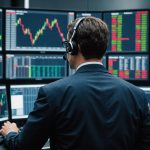Understanding Porchetta and Its Origin
Italian Porchetta holds a significant place in Italy’s rich culinary tradition. This savory dish, often described as a delicacy, is a symbol of festive gatherings and special occasions. Delighting taste buds across Italy, it is renowned for its crispy pork skin and tender, herb-infused meat. Porchetta history and its preparation methods can be traced back to ancient times, reflecting Italy’s diverse culinary landscape.
The culinary tradition of porchetta is believed to have originated in the central region of Italy, particularly in places like Lazio and Umbria, where it remains a staple. Each region boasts its own unique twist on the classic recipe. While the basic principles of preparing porchetta remain constant, variations exist in the use of herbs and spices, subtly influencing its flavor across different parts of the country.
In parallel : A taste adventure: australian wine meets italian wine
The role of fennel is particularly notable in traditional porchetta recipes. Fennel seeds or fronds are often incorporated, lending a distinct aromatic quality that enhances the overall taste. This herb is a key ingredient, adding an aniseed-like flavor that complements the rich, savory meat perfectly. Such attention to detail in ingredients is what makes Italian porchetta a revered dish in both its homeland and beyond.
Ingredients for Flavor-Packed Porchetta
Crafting a succulent porchetta requires a careful selection of ingredients that build layers of flavor and texture. Central to a memorable porchetta is the use of fresh fennel seeds, which impart a distinctive, aromatic fennel flavor. The seeds should be crushed to release their natural oils, enhancing their contribution to the dish.
Also read : Unveiling the Perfect Recipe: How to Make Light and Fluffy English Scones with Clotted Cream and Jam!
Beyond fennel, a harmonious blend of other cooking herbs and spices elevates the pork. Fresh rosemary and sage are traditional and provide earthy, aromatic notes. These herbs should be finely chopped and generously rubbed onto the pork’s surface, allowing their flavors to permeate the meat during cooking.
Garlic is another critical element, providing depth and robust flavor. It should be used liberally—either minced or sliced—and combined with the herbs and fennel. Additionally, a touch of red pepper flakes can add a subtle heat, complementing the sweetness of roasted pork.
For an extra layer of savoriness, a sprinkle of salt and freshly ground black pepper is essential. These fundamental seasonings not only enhance the other ingredients but also help to develop a savory crust on the porchetta.
Combining these ingredients thoughtfully ensures a flavor-packed porchetta that delights the palate.
Step-by-Step Preparation Instructions
To achieve an authentic Italian porchetta recipe, understanding the cooking techniques is essential. Follow this step-by-step guide to master the art of making delectable porchetta.
Preparing the Pork
The first important step is selecting the right cut of pork. Choose a pork belly with skin-on, as it provides the perfect balance of fat and meat, ensuring flavour and moisture. The cut should be around 5-7 pounds for an average-sized porchetta. Trim excess fat if necessary, but leave enough to render and flavour the meat during cooking.
Seasoning with Fennel
Fennel seeds are the highlight of porchetta seasoning. Crush approximately two tablespoons of fennel seeds using a mortar and pestle or spice grinder. Combine the crushed seeds with other spices like garlic, rosemary, salt, and pepper to create a flavourful rub. Generously massage the mixture into the pork, ensuring even coverage for a consistent taste.
Rolling and Tying the Porchetta
Rolling and tying are crucial techniques to perfecting porchetta. Roll the seasoned pork belly into a tight log, skin-side out, to ensure even cooking and crispy skin. Use butcher’s twine to tie the roll every two inches; this prevents it from unraveling and helps it keep its shape. Properly tying also aids in sealing flavours and juices during roasting.
Cooking Techniques for Perfect Porchetta
Mastering the art of making porchetta involves specific cooking methods to ensure a crispy skin and succulent meat. Roasting porchetta is the recommended cooking method, highlighting the balance between temperature and time.
Roasting Porchetta
For the perfect roast, achieving a crackling skin while maintaining tender meat requires precision. Start by preheating the oven to a high temperature of around 475°F (245°C). This initial intense heat renders the skin crispy. After 20 minutes, lower the oven to 325°F (165°C) to finish cooking, allowing the meat to absorb the flavors without drying out.
Importance of Cooking Temperatures
Cooking temperatures are paramount. A meat thermometer is an essential tool to achieve the right internal temperature, usually 145°F (63°C) for pork, ensuring safety and moisture retention. Always let the porchetta rest for at least 15 minutes post-roasting to settle the juices and enhance tenderness.
Detailed attention to cooking times is crucial. Generally, roasting takes 2 to 3 hours, depending on the porchetta’s size. Following these guidelines will consistently deliver a porchetta that impresses with its crispy skin and mouth-watering tenderness.
Tips for Serving and Pairing
In the world of Italian cuisine, serving and pairing porchetta effectively can elevate your meal to a new level. When considering serving suggestions, balance is key. Porchetta pairings with appropriate side dishes create a complete culinary experience.
Ideal Side Dishes
To complement the rich flavours of porchetta, consider traditional Italian sides. Roasted potatoes seasoned with rosemary and garlic enhance the crispy skin and tender interior. A light arugula salad with a lemon vinaigrette adds freshness and a crisp contrast.
Wine and Beverage Pairings
For beverages, a thoughtful selection enhances the dish’s savoury notes. A Tuscan Chianti or a medium-bodied red wine can be a classic choice, as they complement the herbs and spices with their robust flavours. If opting for non-alcoholic beverages, a sparkling mineral water with a slice of lemon can cleanse the palate effectively.
Presentation Tips
Finally, how you showcase porchetta at the table makes a lasting impression. Slice it into thick rounds, displaying the crispy skin, and arrange on a wooden board for a rustic feel. Garnish with fresh rosemary sprigs for an aromatic touch. This approach not only highlights the dish’s flavours but also its visual appeal. By honing the art of presentation, you ensure a memorable dining experience.
Variations on Traditional Porchetta
With a rise in creative recipes, porchetta has seen numerous inventive twists. Notably, these porchetta variations stem from using diverse meats and seasonings. Traditionally, porchetta features pork, but curious chefs experiment with alternatives like turkey or even fish, bringing fresh dynamics to this classic dish.
Seasonal ingredients also offer new avenues. Imagine a winter porchetta with aromatic rosemary and sage, or a summer version bursting with vibrant citrus and herbs. These alternatives not only enhance flavour but also allow for a meal that resonates with changing seasons, keeping dishes exciting year-round.
Italian regions each boast their own unique adaptations. In Tuscany, the simplicity of rosemary, garlic, and fennel seeds prevails, while Abruzzo porchetta is renowned for its use of wild fennel and black pepper. These regional twists showcase Italy’s rich culinary heritage and underline the adaptability of porchetta recipes across the country.
By blending alternative ingredients with traditional methods, one can craft a porchetta experience that is both familiar and innovative. Exploring these adaptations not only diversifies culinary repertoire but also invites a deeper appreciation for how diverse ingredients can redefine a beloved classic.






